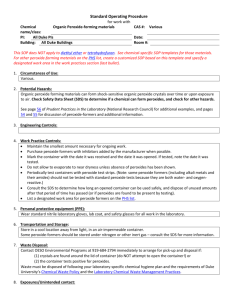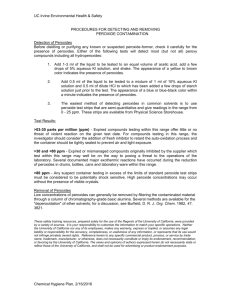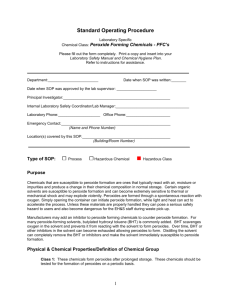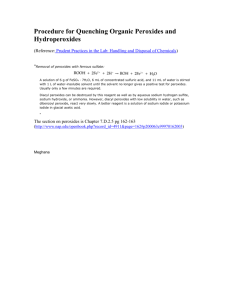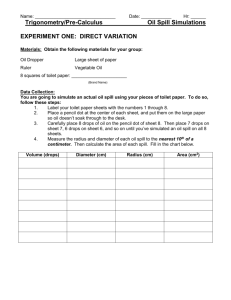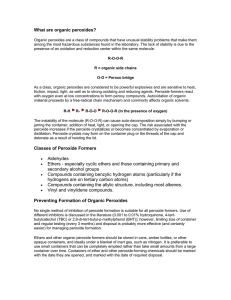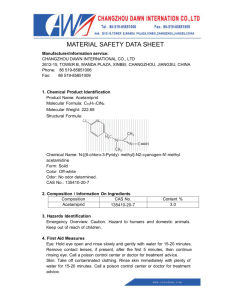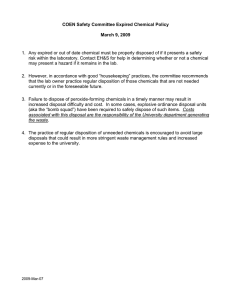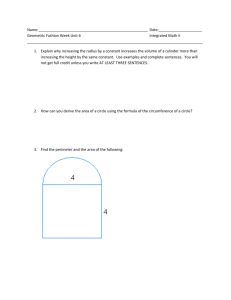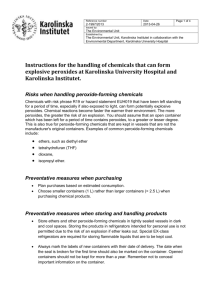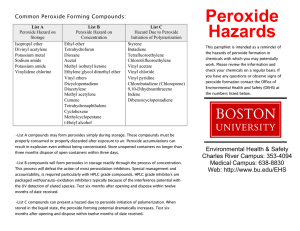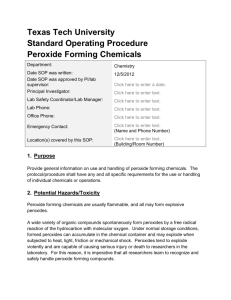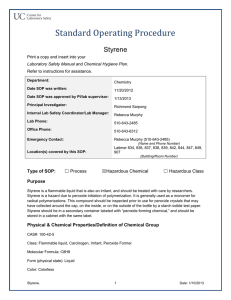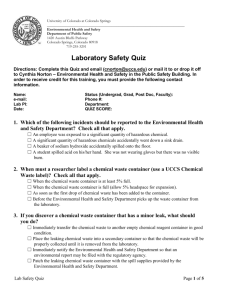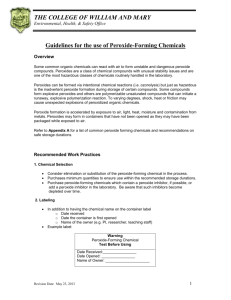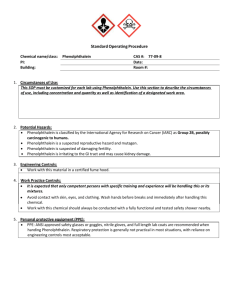Peroxide
advertisement
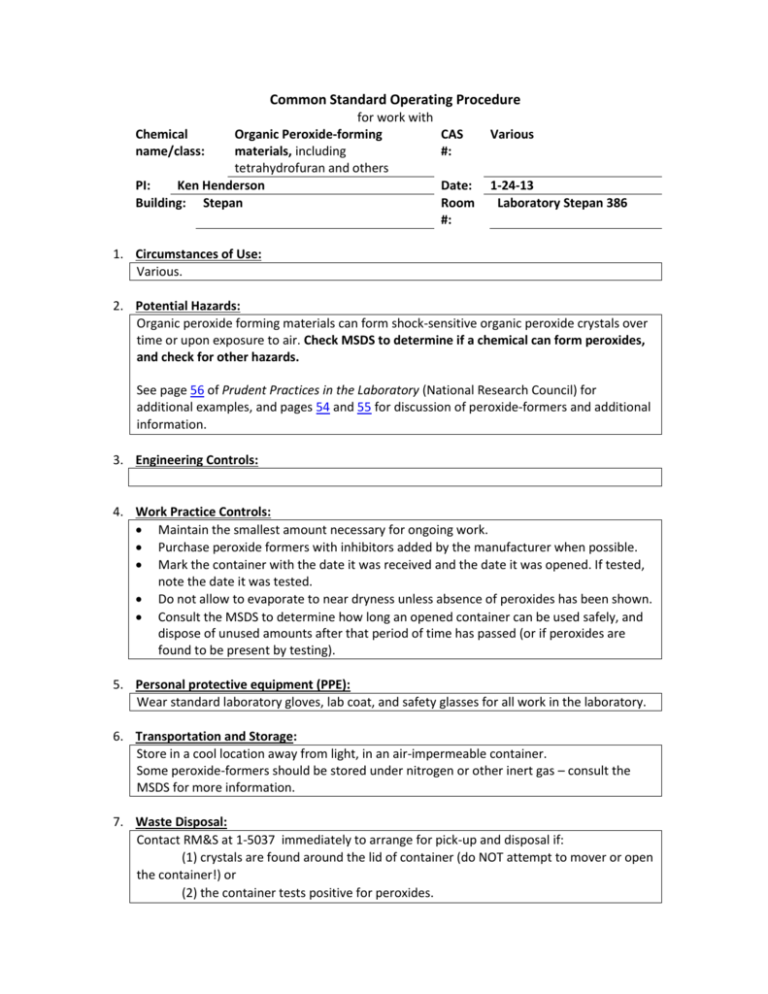
Common Standard Operating Procedure for work with Organic Peroxide-forming materials, including tetrahydrofuran and others PI: Ken Henderson Building: Stepan Chemical name/class: CAS #: Various Date: Room #: 1-24-13 Laboratory Stepan 386 1. Circumstances of Use: Various. 2. Potential Hazards: Organic peroxide forming materials can form shock-sensitive organic peroxide crystals over time or upon exposure to air. Check MSDS to determine if a chemical can form peroxides, and check for other hazards. See page 56 of Prudent Practices in the Laboratory (National Research Council) for additional examples, and pages 54 and 55 for discussion of peroxide-formers and additional information. 3. Engineering Controls: 4. Work Practice Controls: Maintain the smallest amount necessary for ongoing work. Purchase peroxide formers with inhibitors added by the manufacturer when possible. Mark the container with the date it was received and the date it was opened. If tested, note the date it was tested. Do not allow to evaporate to near dryness unless absence of peroxides has been shown. Consult the MSDS to determine how long an opened container can be used safely, and dispose of unused amounts after that period of time has passed (or if peroxides are found to be present by testing). 5. Personal protective equipment (PPE): Wear standard laboratory gloves, lab coat, and safety glasses for all work in the laboratory. 6. Transportation and Storage: Store in a cool location away from light, in an air-impermeable container. Some peroxide-formers should be stored under nitrogen or other inert gas – consult the MSDS for more information. 7. Waste Disposal: Contact RM&S at 1-5037 immediately to arrange for pick-up and disposal if: (1) crystals are found around the lid of container (do NOT attempt to mover or open the container!) or (2) the container tests positive for peroxides. Waste must be disposed of following your laboratory-specific chemical hygiene plan and the requirements of the University’s Chemical Waste Policy and the Laboratory Chemical Waste Management Practices. 8. Exposures/Unintended contact: Contact RM&S for medical advice on occupational chemical exposures, 1-5037. For an actual chemical exposure or injury, complete the work-related injury or illness report found at: http://chemistry.nd.edu/safety/supervisors-report-of-injury-to-the-health-center.pdf. If medical attention is needed, see http://chemistry.nd.edu/safety/procedures-for-injuryillness-or-incident.pdf. 9. Spill Procedure: “Large” spills of volatile or powdered hazardous materials must be referred to the spill response team by calling 911 from a campus phone or RM&S at 1-5037 or 574-631-5555 from a cell phone. If cleaning up a spill of peroxide-forming material, do not allow clean-up materials to dry – seal them inside a clear plastic bag. Call RM&S at 1-5037 immediately to schedule pick-up of spill clean-up materials. 10. Training of personnel: All personnel are required to complete the General Lab Safety session thru RM&S. This session includes an introduction to general chemical safety. Furthermore, all personnel shall read and fully adhere to this SOP when handling peroxide-forming materials.
